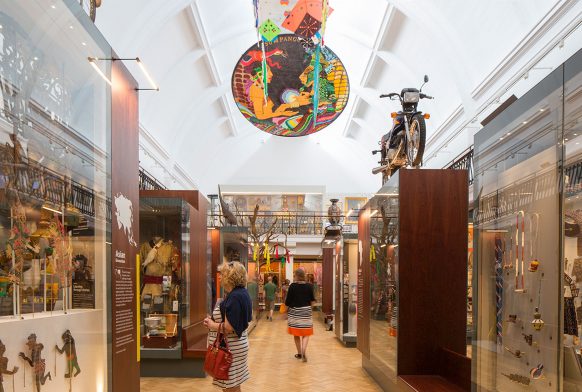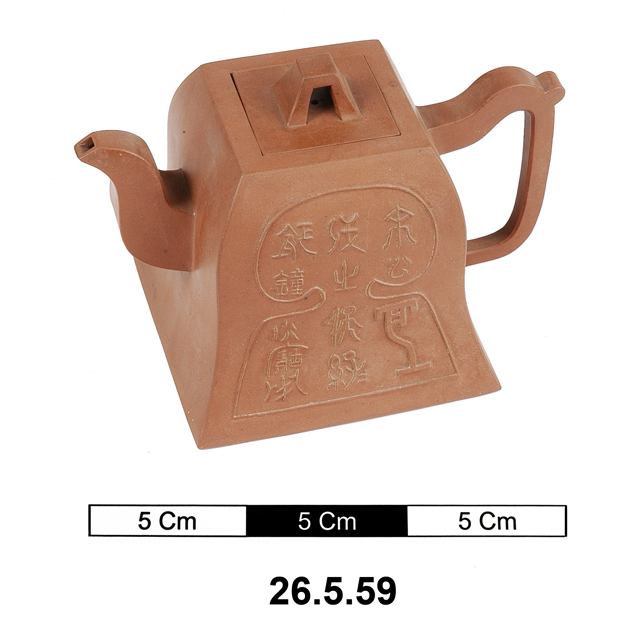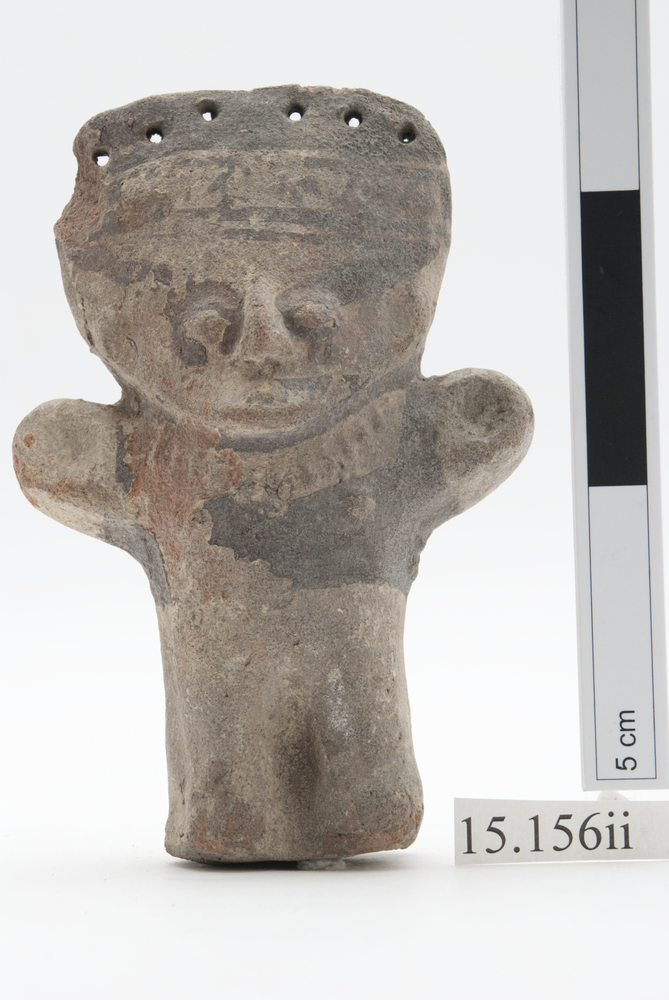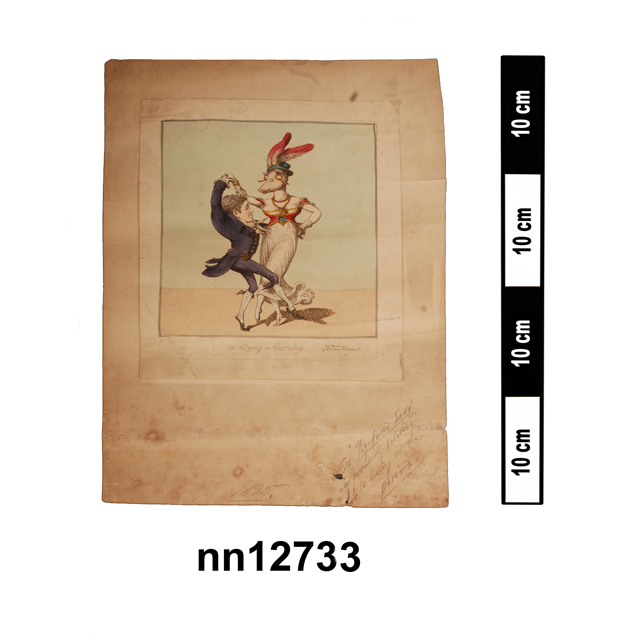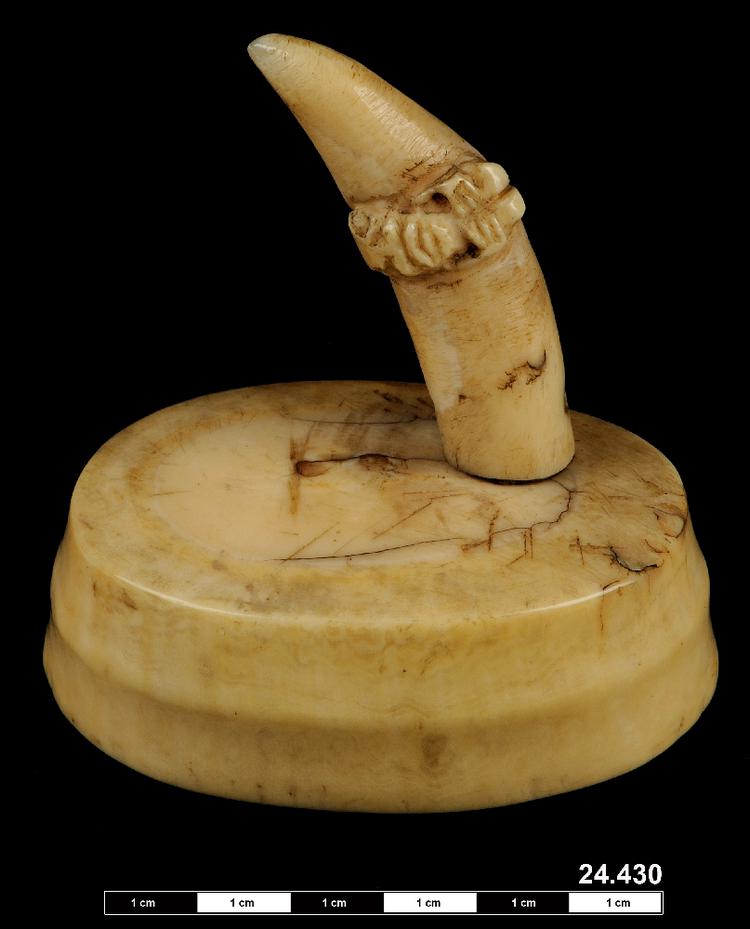
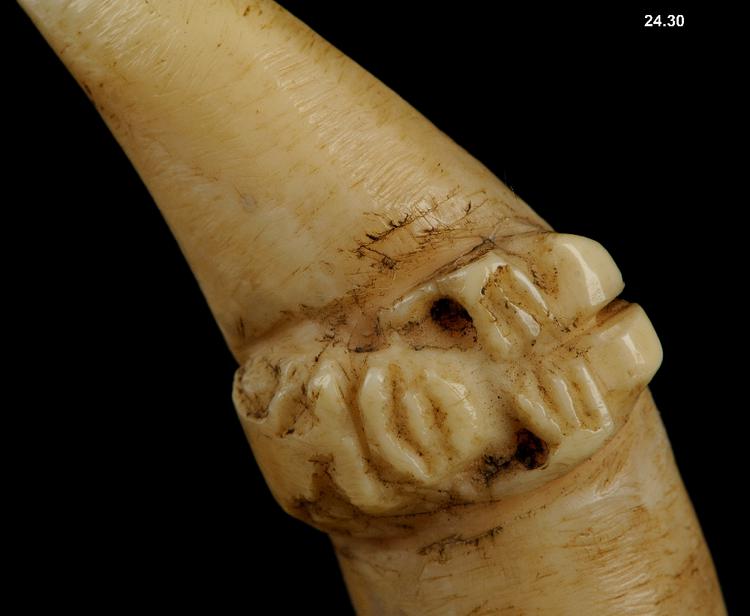
Ivory ear ornament composed of an oval slice right through a large sperm whale tooth, with a bar cut out of another piece, which is pierced through to permit the insertion of a small stick behind the earlobe, which would hold the bar in place. This small stick is missing. The bar has a human tiki figure carved into it.
Whale Ivory Ear Ornament, Hakakai, Marquesas Islands, Central Polynesia. Hakakai ear ornaments of sperm whale ivory were among the most highly prized items of jewellery in the Marquesas Islands during the 18th and 19th centuries, and were worn only on special occasions. Like other Polynesian peoples, the Marquesans did not hunt toothed whales until Westerners drew them into the whaling industry in the early 19th Century, and so all ivory came only from whales beached or drowned in shallow waters. As a result, ivory was always precious, and the hakakai was a way in which pairs of ornaments, perhaps even two, could be produced from a single tooth. Composed of an oval slice right through a large tooth, with a bar cut out of another piece, hakakai were pierced through to permit the insertion of a small stick behind the earlobe, holding the bar in place. Some sources argue that the tiki human figures carved on these bars acted as a stop to prevent the adornment falling out, but as the hole for the stick peg is always closer to the ivory disk, this cannot be the case. The tiki is probably purely decorative, and reflects the traditional Marquesan love of representing the human form. The tuhuka (artist) has given us a particular treat with this piece, because the bar that pierces the ear has been meticulously carved to take the exact shape of a whale’s tooth. Hakakai were so prized that demand far exceeded supply, and the museum also holds a number of putaiana, smaller replica examples manufactured from white Conus shells with bone bars. Sperm whale ivory. Mid-19th century. Purchased from Quincy’s Antiques, 1924.



